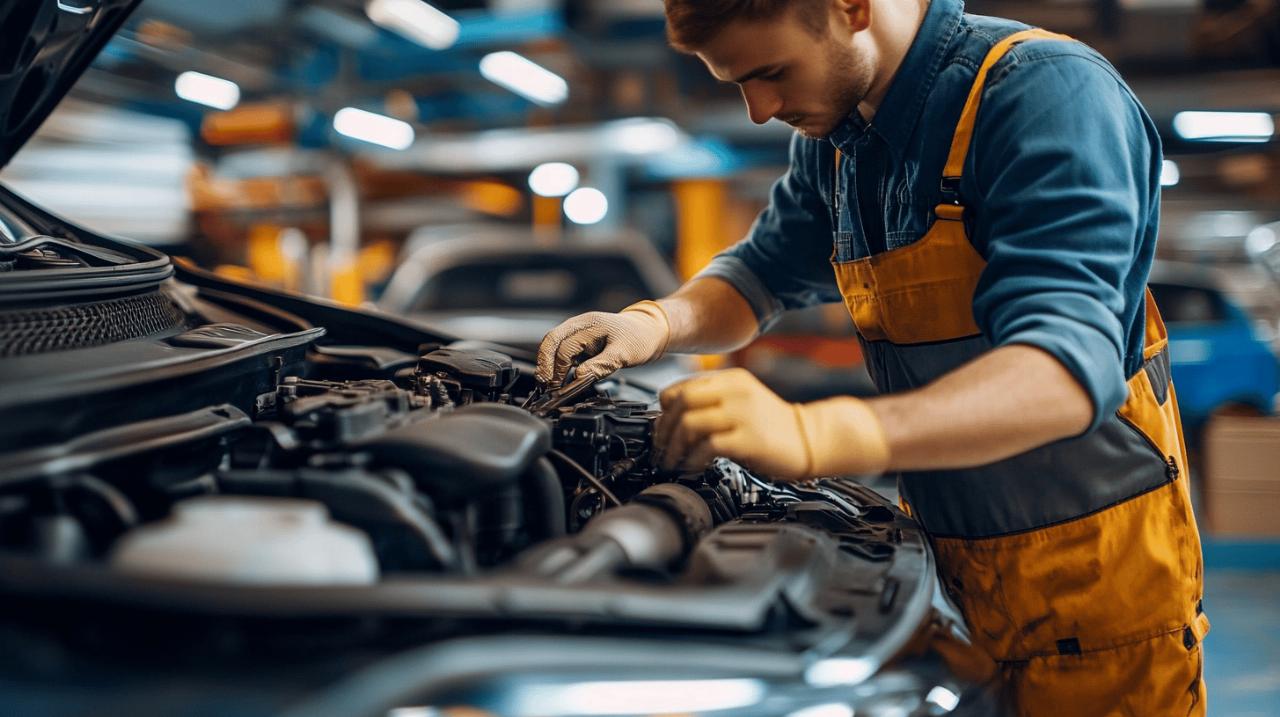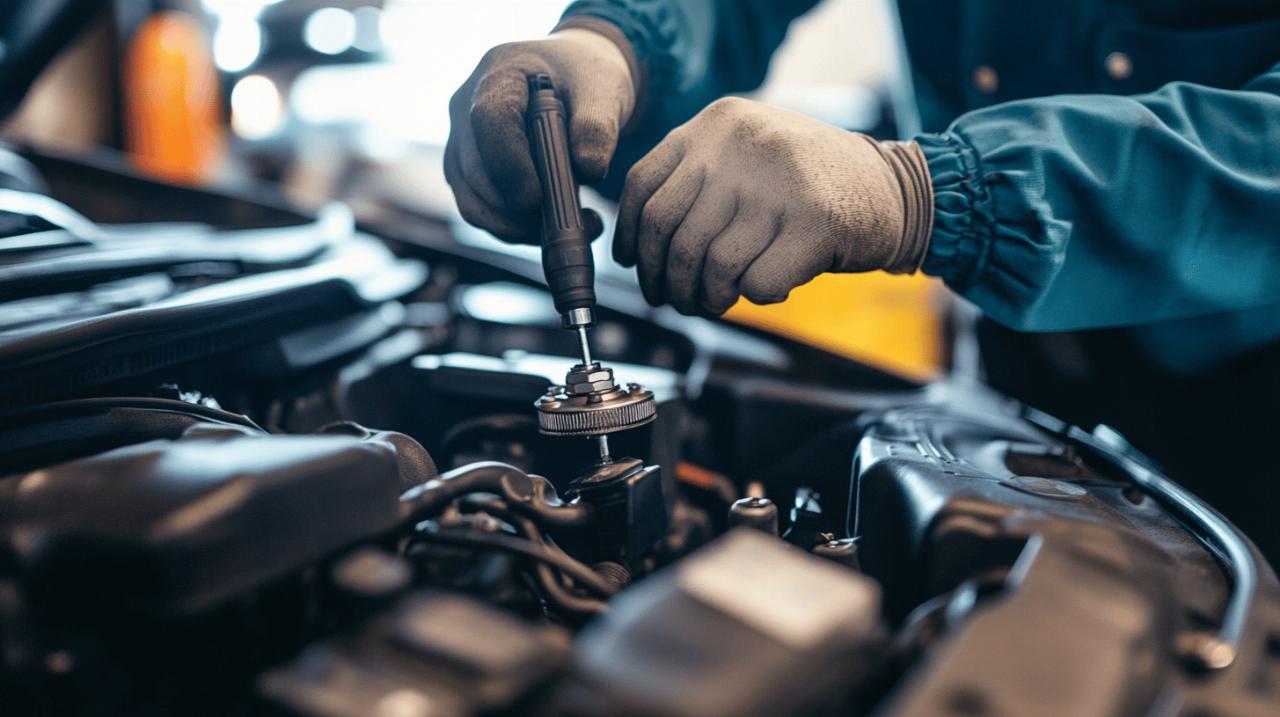Maintaining your car at home can be a rewarding experience that saves you money while giving you a better understanding of your vehicle. With the right knowledge and tools, many routine maintenance tasks can be handled without professional assistance. This guide will walk you through essential DIY car maintenance tips that any vehicle owner can master, regardless of mechanical experience.
Basic car maintenance fundamentals
Before diving into specific maintenance tasks, it’s important to establish the right foundation for your DIY car care journey. Understanding the basics will help you approach maintenance with confidence and ensure you’re prepared for various tasks that might arise. Many car owners find that regular maintenance checks prevent costly repairs down the road and can significantly extend the life of their vehicle, as noted by several automotive experts from https://www.auto-service-gall.de/ and other reputable sources.
Setting up your home garage workspace
Creating an efficient workspace is crucial for successful home car maintenance. Designate a clean, well-lit area with enough space to move around your vehicle. A level concrete surface is ideal, and if possible, invest in good lighting that allows you to see underneath and inside the engine compartment. Consider installing storage solutions for your tools and supplies to keep everything organised and within reach. Having dedicated containers for used fluids and parts will also make disposal easier and more environmentally responsible.
Understanding your vehicle’s service manual
Your car’s service manual is the most valuable resource for DIY maintenance. This document contains specific information about your vehicle’s maintenance requirements, fluid capacities, and recommended service intervals. Many newer cars have digital manuals available online, but physical copies can usually be purchased if yours is missing. Familiarising yourself with this guide will help you understand the unique needs of your vehicle and prevent mistakes that could lead to damage or unsafe driving conditions.
Fluid checks and replacements
Monitoring and maintaining your vehicle’s fluids is perhaps the most fundamental aspect of car maintenance. Regular fluid checks can prevent serious engine damage and keep your car running smoothly across all seasons.
Monitoring oil levels and changes
Engine oil is the lifeblood of your vehicle, providing crucial lubrication to prevent engine wear. Check your oil level monthly by parking on level ground, waiting for the engine to cool, then removing the dipstick, wiping it clean, reinserting it, and checking the level. The colour should be amber to light brown—dark, gritty oil indicates it’s time for a change. DIY oil changes typically cost between £20-£60 compared to £40-£100 at a garage. Remember to dispose of used oil properly at a recycling centre, as improper disposal can cause environmental damage.
Topping up coolant, brake fluid and windscreen wash
Coolant prevents your engine from overheating and freezing in extreme temperatures. Check levels when the engine is cold by examining the overflow reservoir. Brake fluid is essential for safe stopping power—inspect the reservoir under the bonnet and top up with the specific type recommended in your manual. Windscreen wash is simple to maintain but crucial for visibility. Fill the reservoir with premixed solution or concentrate mixed with water according to the season. Low fluids can lead to significant issues—for instance, engine damage from insufficient coolant could cost between £4,000 for a Vauxhall Corsa and £19,200 for an Audi SQ5 to replace.
Tyre care and maintenance
Tyres are your only contact with the road, making their maintenance critical for safety, fuel efficiency, and performance. Regular attention to your tyres can also extend their life, saving you money in the long run.
Checking tyre pressure and tread depth
Tyre pressure should be checked monthly, as proper inflation improves fuel economy and handling while reducing wear. Use a quality pressure gauge and refer to the recommended PSI found in your manual or on the driver’s door jamb. Hot weather increases tyre pressure, which can raise the risk of punctures and blowouts, so be particularly vigilant during summer months. For tread depth, the legal minimum in the UK is 1.6mm across the central three-quarters of the tyre. The classic penny test works well—insert a penny into the tread groove with the Queen’s head upside down. If you can see the top of her head, your tyres need replacing.
Rotating tyres for even wear
Tyre rotation extends the life of your tyres by ensuring even wear patterns. Front and rear tyres wear differently due to steering, braking, and weight distribution. Generally, you should rotate tyres every 5,000 to 8,000 miles. The rotation pattern depends on your drive type—front-wheel, rear-wheel, or all-wheel drive. This job requires a jack and axle stands, and while it’s manageable for most DIYers, proper safety precautions are essential to prevent accidents.
Electrical system basics
Modern vehicles rely heavily on electrical systems for everything from starting the engine to operating comfort features. Understanding basic electrical maintenance can prevent many common issues and roadside emergencies.
Battery maintenance and testing
The battery is central to your car’s electrical system and typically lasts 3-5 years. Flat batteries are one of the top causes of breakdowns in the UK. Inspect your battery regularly for corrosion, leaks, and loose connections. Warning signs of a failing battery include slow engine cranking or clicking sounds when trying to start. Clean terminals with a wire brush and baking soda solution to remove corrosion. Consider using a battery maintainer during long periods of inactivity, and try to avoid numerous short trips which prevent the battery from fully charging.
Inspecting and replacing lights
Functioning lights are essential for safety and are required by law. Regularly check all lights including headlights, brake lights, turn signals, reverse lights, and hazard lights. Replacement is usually straightforward—most bulbs can be accessed from under the bonnet or via interior panels. Keep spare bulbs in your car for emergencies. LED lights last longer but may be more complex to replace. Faulty lights are a common reason for MOT failures, so addressing them promptly can save you time and money during your annual test.
Safety practices for diy mechanics
Safety must always be your priority when working on your vehicle. Many common maintenance tasks carry risks that can be mitigated with proper precautions and techniques.
Proper Use of Jacks and Axle Stands
Never rely solely on a jack to support your car while working underneath it. After lifting the vehicle with a jack, always place axle stands at the manufacturer’s recommended jacking points before getting under the car. Ensure the car is on level ground, the handbrake is engaged, and wheels are chocked. Shake the vehicle gently to confirm it’s secure on the stands before proceeding. Remember that no money saved on maintenance is worth risking your safety—if you’re uncertain about secure lifting, consult a professional.
Battery disconnection procedures
Before performing any electrical work on your vehicle, disconnect the battery to prevent short circuits or electrical shocks. Always disconnect the negative terminal first, identifiable by its black cover or minus sign. When reconnecting, attach the positive terminal first, then the negative. Keep metal tools away from both terminals simultaneously to avoid creating a circuit. Be aware that disconnecting the battery may reset your car’s electronic systems, including radio presets and engine management adaptations, so have any necessary reset codes ready before proceeding.
Essential tools for home car maintenance
Having the right tools makes DIY maintenance simpler, safer, and more effective. Building a collection of quality tools is an investment that pays dividends over time through successful home repairs.
Building your basic toolkit
Start with essential hand tools: a comprehensive socket set with both metric and imperial sizes, a set of combination spanners, screwdrivers in various sizes and types, pliers, and adjustable wrenches. Add automotive-specific items like an oil filter wrench, funnel, oil drain pan, and tyre pressure gauge. Safety equipment is equally important—invest in chemical-resistant gloves, safety glasses, and appropriate jack and axle stands rated for your vehicle’s weight. A good work light or headlamp is invaluable for seeing into dark engine compartments.
Specialised tools worth investing in
As you become more comfortable with DIY maintenance, consider adding specialised tools that make specific jobs easier. A multimeter is useful for diagnosing electrical issues, while a brake bleeding kit simplifies brake fluid changes. A torque wrench ensures fasteners are tightened to manufacturer specifications, preventing damage from over-tightening. For those interested in deeper diagnostics, an OBD-II scanner can read and clear error codes from your vehicle’s computer. While these tools represent additional investment, they quickly pay for themselves by enabling you to handle more complex maintenance tasks at home.
Creating a maintenance schedule
Consistent maintenance is key to vehicle longevity. Creating and following a schedule ensures no important service is overlooked and helps you budget for upcoming maintenance needs.
Keeping detailed maintenance records
Document all maintenance activities in a dedicated logbook or digital spreadsheet. Record the date, mileage, work performed, parts replaced, and any observations about your vehicle’s condition. Include receipts for parts and fluids to track expenses and provide proof of maintenance for warranty purposes or when selling the vehicle. This historical record becomes invaluable for troubleshooting issues and identifying patterns in your car’s performance or component lifespan.
Seasonal maintenance considerations
Different seasons present unique challenges for your vehicle. In winter, focus on battery health, antifreeze levels, and tyre condition for improved traction. Summer maintenance should address cooling system efficiency, air conditioning performance, and checking for overheating issues. Spring is ideal for thorough cleaning to remove winter road salt and checking undercarriage components for corrosion. Autumn maintenance should prepare your vehicle for colder weather with battery testing, fluid checks, and ensuring all lights work properly for earlier nightfall.
Knowing When to Call a Professional
While DIY maintenance can save money and be rewarding, recognising your limitations is an important part of responsible car ownership. Some repairs require specialised knowledge, tools, or safety precautions beyond the typical home mechanic’s capability.
Recognising complex repair warning signs
Certain symptoms indicate problems that typically require professional attention. These include unusual engine noises like knocking or grinding, dashboard warning lights that remain on after basic checks, strong burning smells, fluid leaks on your driveway, or significant changes in braking performance. Modern vehicles with complex electronic systems often need dealer-specific diagnostic equipment for accurate troubleshooting. If a repair requires specialised tools you’re unlikely to use again, the investment might outweigh the savings of DIY repair.
Finding a trustworthy mechanic
When professional help is needed, finding a reputable mechanic is crucial. Seek recommendations from friends, family, and online reviews. Look for shops with ASE-certified technicians or manufacturer certifications relevant to your vehicle. A good mechanic explains issues clearly, provides written estimates before work begins, and welcomes questions about the repair process. Building a relationship with a trusted mechanic can be valuable for those occasions when DIY isn’t practical, ensuring your vehicle receives quality care even when you’re not handling the work yourself.




